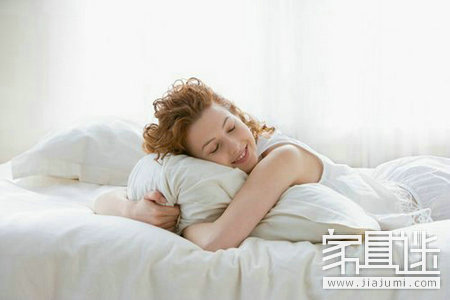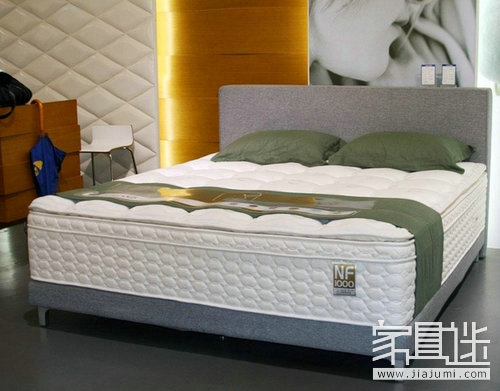Many consumers who are planning to buy a mattress often find themselves confused. They can’t easily compare options or make a decision, and they wonder why some mattresses are priced as low as 99 yuan while others cost hundreds of thousands. How can such a big price gap exist? Are claims like “pure latex†or “memory foam†really worth it? In this article, we’ll explore the key questions surrounding mattress purchasing.

**Question 1: Why is there such a big difference in mattress prices?**
During the May Day holiday, many stores advertised branded mattresses for just 99 or 199 yuan. But how realistic is that? When visiting stores, reporters found a huge range in mattress prices — from several thousand yuan for well-known brands to over 200,000 yuan for imported ones. One consumer said, “I understand that quality and brand affect price, but why would a latex mattress cost nearly 100,000 when its structure is similar to cheaper ones? That seems unreasonable.â€
**Industry Insight**
Zhang Fucai, Chairman of Power Furniture, explained that the 99-yuan deals are often promotional strategies to attract customers. Some merchants sell at a loss or offer bulk discounts. These prices don’t reflect real market value. He also mentioned that materials, production processes, and brand reputation all contribute to the price difference. High-end mattresses usually have better craftsmanship and premium materials, which justify their high cost.
**Consumer Advice**
Mai Yimin suggested that a comfortable mattress should cost at least 2,000 yuan. For imported brands, prices typically start around 10,000 yuan. Consumers should choose based on their needs and budget.

**Question 2: How to choose a special type of mattress?**
There are many types of mattresses available, including spring, latex, memory foam, and water beds. Are these special features really beneficial?
**Industry Insight**
Wei Wei explained that the market includes mats, latex pads, and spring mattresses. Mats are made from plant-based materials and are harder, while latex mattresses come in natural and synthetic varieties. Natural latex is soft but less supportive, while synthetic versions improve on that. Memory foam adapts to body shape and provides pressure relief, making it ideal for those who prefer a softer feel.
**Consumer Advice**
Mai Yimin advised that memory foam is good for people who like a snug fit, but not for those who move a lot during sleep. Pure latex is suitable for those who prefer a softer bed. It’s important to match the mattress type with your sleeping habits.
**Question 3: Can you really tell if a mattress is good by lying on it?**
Salespeople often ask customers to lie down and test the firmness. Is this enough to determine quality? Also, is it true that the softer the better, or should you choose based on personal preference?
**Industry Insight**
Luo Wei clarified that a hard mattress isn’t necessarily better. The key is to find a balance between firmness and comfort. Lying down is still the best way to assess a mattress, but it’s important to know what to look for.
**Consumer Advice**
Zhang Fucai recommended checking support in the neck, shoulders, and hips when lying down. Ensure the waist fits naturally into the mattress. Try side lying to check edge support and test with two people to see if the mattress remains stable.

**Question 4: Which is better: spring or latex?**
Salespeople often highlight the springs and latex used in mattresses. Is more springs always better?
**Industry Insight**
Wei Wei emphasized that springs are the core of spring mattresses, similar to a car engine. Different types, like pocket springs and open coils, have varying levels of support. Mai Yimin noted that the number of springs doesn’t directly correlate with quality. Latex quality depends on bubble distribution and evenness.
**Consumer Advice**
Good brands source high-quality materials. While accessories may not be brand-specific, reputable brands ensure quality. Consumers should pay attention to internal materials and construction.
**Question 5: Do the extra materials affect the mattress quality?**
Salespeople often emphasize the fabric and filling used. Do these details matter?
**Industry Insight**
Zhang Fucai explained that fillers like latex, sponge, and cotton play a role in comfort and support. The surface fabric also affects aesthetics and durability. Poor weaving can lead to discomfort.
**Consumer Advice**
Zhang Fucai advised checking the thickness and quality of internal materials. Luo Wei recommended looking inside the mattress to ensure no substandard materials are used, like untreated cotton.

**Question 6: How to judge environmental standards?**
Many salespeople claim their products are environmentally friendly. Are there actual standards to back this up?
**Industry Insight**
According to recent quality reports, some spring mattresses exceeded safety standards. Harmful substances mainly come from low-quality sponges and chemical treatments. New national standards now regulate formaldehyde, flame retardants, and other harmful substances.
**Consumer Advice**
Consumers should look for certifications and check for any strange odors. Always inspect the internal materials to ensure they meet environmental and safety standards.
Silver Mirror,Round Silver Mirror,Silver Standing Mirror,Mini Transparent Silver Mirror
Dongguan Huahui Glass Manufacturing Co.,Ltd , https://www.antiquemirrorsupplier.com